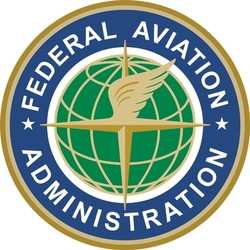Thu, Jul 18, 2013
Contributing Factor In 12 Fatal Accidents Over The Past 10 Years
The leaders of 11 aviation association presidents joined FAA Administrator Michael Huerta in signing a letter to pilots reminding them of the dangers of impairment from prescription and over-the-counter drugs. Analysis shows drug impairment to be a causal or contributing factor in 12 of fatal general aviation accidents over the past decade. “We are ... concerned that pilots might not be aware of the ubiquitous presence of sedating antihistamines in many over-the-counter (OTC) treatments for common allergies, coughs, colds, and sleep aids,” the letter states.

A fact sheet that accompanies the letter notes that the loss-of-control working group of the General Aviation Joint Steering Committee (GAJSC) found that 42 percent of the pilots killed in loss-of-control accidents between 2001 and 2010 were found to be positive for drugs or medications. The most common impairing drug is diphenhydramine, which is found in more than 50 OTC and prescription medications.
The letter offers four things pilots can do to reduce their risk of medication-induced impairment:
- Become an educated pilot and health care consumer;
- After using medications with impairing side effects, follow current FAA guidelines and do not fly for at least five dosing intervals;
- Always use the I’M SAFE personal readiness checklist; and,
- Use expert guidance (from your AME or aviation support group) to determine when it’s safe to resume flying after using impairing medications.
The letter is signed by: Matt Zuccaro, Helicopter Association International; Paula Derks, Aircraft Electronics Association; Tom Turner, American Bonanza Society; Craig Fuller, Aircraft Owners and Pilots Association; Jack Pelton, Experimental Aircraft Association; Pete Bunce, General Aviation Manufacturers Association; Robert Meder, National Association of Flight Instructors; Tom Hendricks, National Air Transportation Association; Ed Bolen, National Business Aviation Association; Doug Stewart, Society of Aviation Flight Educators; and Ed Scott, United States Parachute Association.
They conclude the letter, saying, “Personal risk management is the responsibility of all licensed airmen. [W]e urge you to take the appropriate steps to mitigate the risk of impairment when flying.”
More News
Charted Visual Flight Procedure Approach An approach conducted while operating on an instrument flight rules (IFR) flight plan which authorizes the pilot of an aircraft to proceed >[...]
“When l became the Secretary of Defense, I committed to rebuild our military to match threats to capabilities. Drones are the biggest battlefield innovation in a generation, >[...]
Aero Linx: Stearman Restorers Association Welcome to the Stearman Restorers Association. The Stearman Restorers Association is an independent “Not for Profit” 501C-3 Co>[...]
Airplane Exhibited A Partial Loss Of Engine Power When It Was About Halfway Down The Runway Analysis: The pilot of the experimental amateur-built airplane was departing from his pr>[...]
The Flight Path Was Consistent With Low-Altitude Maneuvering On June 18, 2025, about 0922 mountain standard time, a Cessna A150L airplane, N6436F, was substantially damaged when it>[...]
 ANN's Daily Aero-Term (07.15.25): Charted Visual Flight Procedure Approach
ANN's Daily Aero-Term (07.15.25): Charted Visual Flight Procedure Approach Aero-News: Quote of the Day (07.15.25)
Aero-News: Quote of the Day (07.15.25) ANN's Daily Aero-Linx (07.15.25)
ANN's Daily Aero-Linx (07.15.25) NTSB Final Report: Kjelsrud Gary Kitfox
NTSB Final Report: Kjelsrud Gary Kitfox NTSB Prelim: Cessna A150L
NTSB Prelim: Cessna A150L



